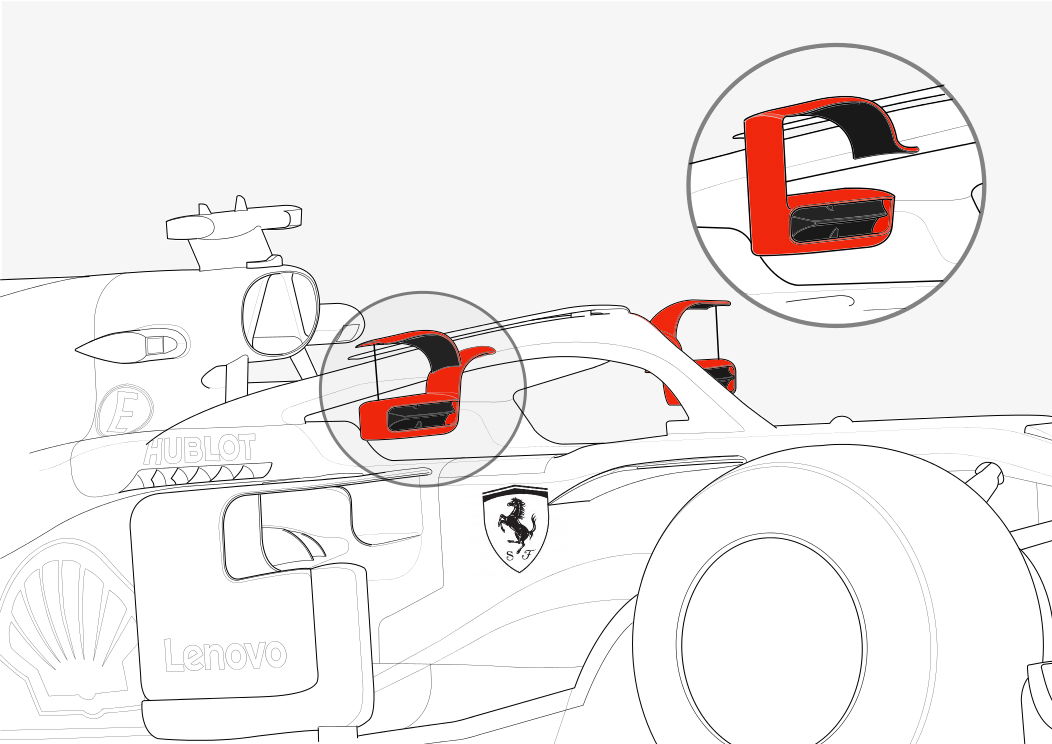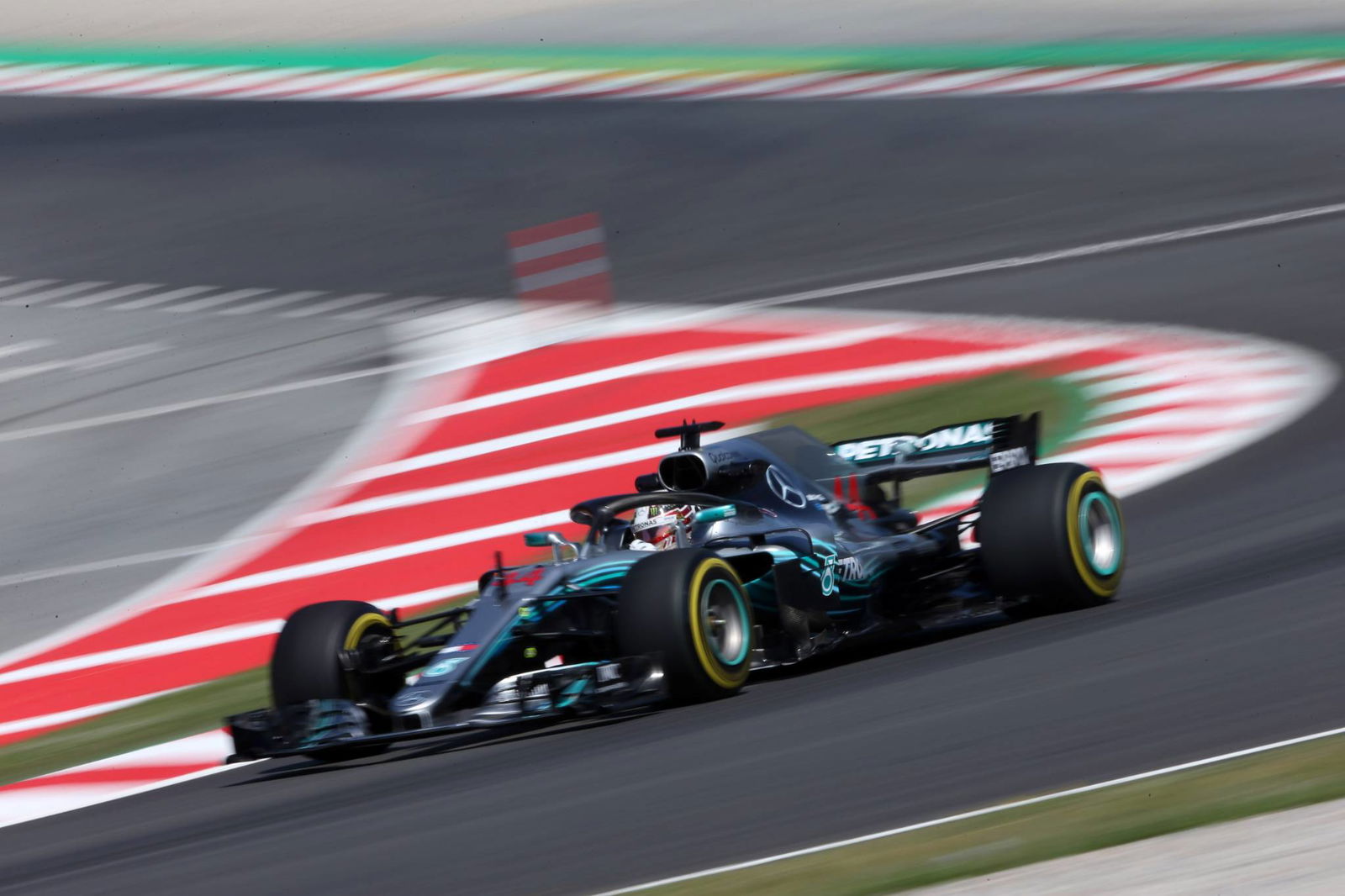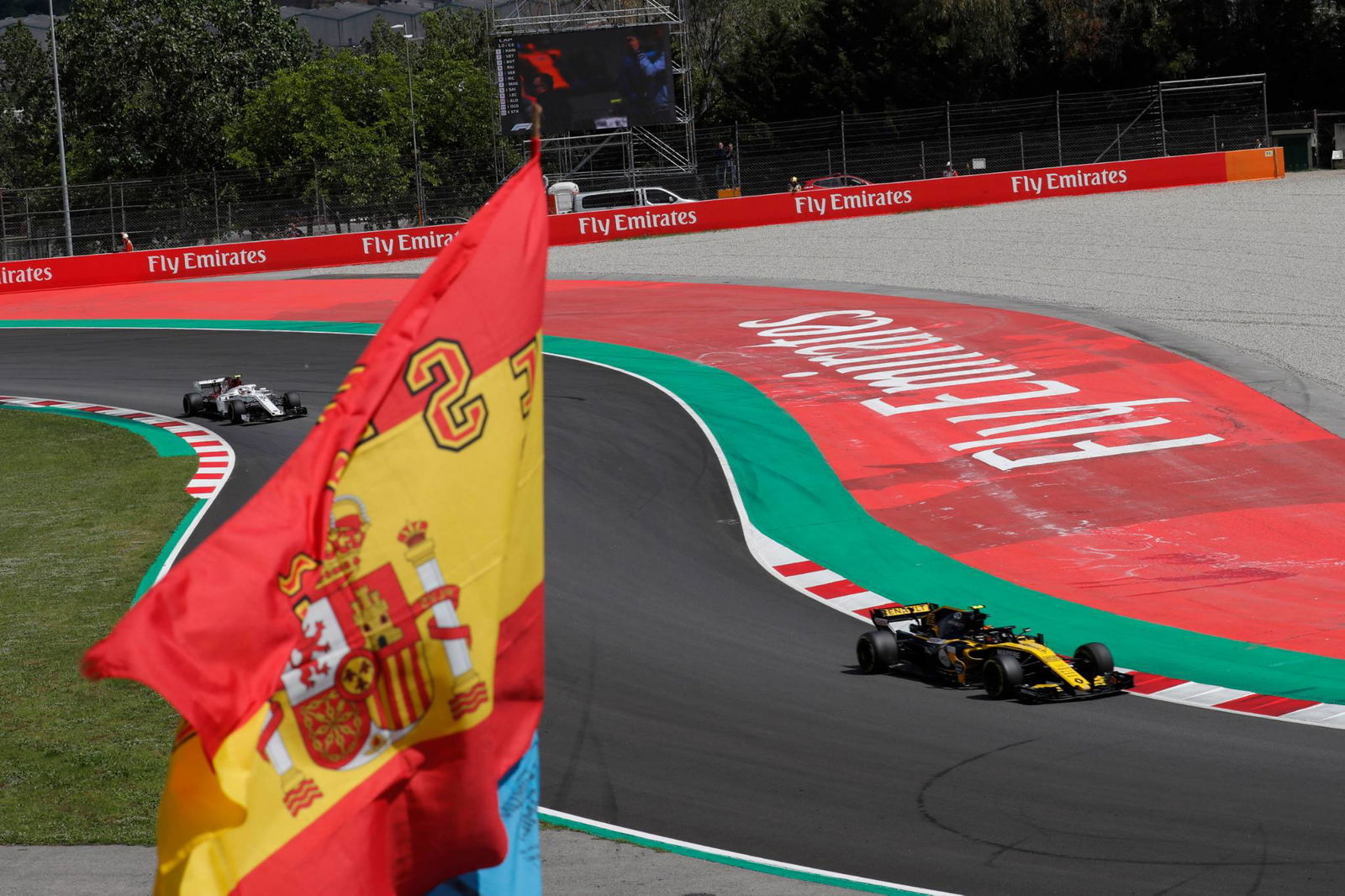Tech: How Ferrari's Halo mirrors could cause another F1 rules headache
It was inevitable. Once the FIA declared mounting the rear mirrors on the Halo acceptable it was only a matter of time until someone pushed the boundaries.

It was inevitable. Once the FIA declared mounting the rear mirrors on the Halo acceptable it was only a matter of time until someone pushed the boundaries.
Ferrari may have forced the governing body to go that way, their intricate housing design idea brewed and ready to be bottled in an instant, but the Scuderia is that team. The thing is, while the situation was dealt with well in Barcelona – allowing Ferrari to run the questionable mirror vanes for one event only as removing bonded carbon fibre on site is a bit of a tricky job – without clearly defining new rules on the matter the sport has risked opening a can of worms on an already murky area in the regulations.
Either purposely or not Formula 1 has a habit of not completely nipping things in the bud when it comes to the engineering of the cars.
In recent years we have seen various forms of oil burning and a series of limits imposed on it; complex interlinked suspension systems to control the car’s aerodynamic platform; exhaust blown diffusers that with each passing year from 2010 to 2013 got more elaborate despite attempts to quash them; flexible front wings that were easy to pass through scrutineering... we could go on.
Sure this is the nature of the business, and it’s what draws a lot of fans’ attention, but at some point the regulators, seemingly without realising how they got into this position, say ‘enough is enough’ and steamroller what’s allowed in the rules after millions of pounds have been spent.
There are currently a few regulations and box regions that control the mirror assembly design, but these weren’t moved accordingly to the Halo area. This is why we should expect a whole host of new approaches to the wing mirror rules despite the FIA’s stance on them in Barcelona. And what stance is that? The mirrors, housings and supports must only be designed for their primary functions and not for a fundamental aerodynamic benefit.
This is why we will likely see the continuation of the drooped pillars on the Ferrari, minus the ‘eyebrow’ vanes supported by the vertical strut.
But this will have definitely got the designers thinking: the mirror needs to be supported in such a way that it wouldn’t be possible to attach to the car through a particular geometry. The extra vanes on the Ferrari, branching from the supports, needn’t be there as they add no structural integrity to the mirror assembly (as correctly deemed by the FIA) but their concept can be furthered, as shown in the illustration below.

The mirror and the turning vane remain in the same position as before but the support is deleted and the vane now acts as the support, looping over the housing and attaching to it on the other side at right angles. This design provides almost exactly the same benefit as the original – minus some of the vortex-inducing capabilities that an open ended vane has, which essentially has an endplate now – yet is theoretically legal.
At least one other team has their own Halo-mounted mirrors in development: Renault, who have shown good technical progress this year despite their lack of pace relative to the frontrunners, were spotted trialling a rapid prototyped support and housing suspended from the Halo over the grand prix weekend.
It is not uncommon for a team to bring a 3D print machine with them to the races, arming them with the ability to quickly produce plastic components to temporarily fix unforeseen issues, be that on the car or pitstop equipment. Inspired by Ferrari’s idea, Renault may well have drafted their own on site and given the driver a visibility test before going further with its design.

Their solution was different but appeared to be a legal one, utilising a slender horizontal blade that extended out over the top of the mirror housing, the mirror suspended by two small pieces of bodywork. This is fine as all of the components must be there to support the housing, although it could be argued that the two small elements (which appear to form vortex generators) needn’t be there and the blade could attach directly to the mirror.
The next round of the championship in Monaco will provide us with a clearer picture on what is within reason and what is not regarding mirror design, but if the matter spirals as the season progresses, it wouldn’t be at all surprising to see further changes afoot.
Update: The FIA has released a statement to clarify its position on Halo-mounted mirrors:
"Whilst the FIA accepts that teams will legitimately design the mirrors, housings and mountings to minimise any negative aerodynamic effects they may cause, we believe that any aerodynamic benefits should be incidental, or at least minimal.
"In order to ensure this is the case all mountings must:
"A) Provide a meaningful structural contribution to the mounting system. If you use more than one mounting you may be asked to satisfy us, by way of a physical test, to demonstrate this.
"B) Be mounted to the lower and/or inboard surface(s) of the mirror housing.
"As the criteria for determining the eligibility of a mounting are to some extent subjective, the FIA would be available to discuss the legality of a new design before you introduce it in a race, to avoid wasting resource, time or money. The FIA expect to have full compliance with the present technical directive by the next race."

